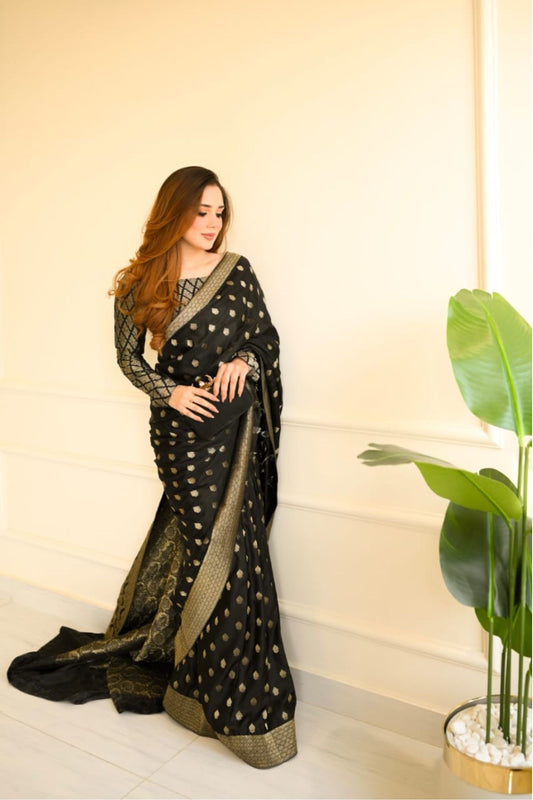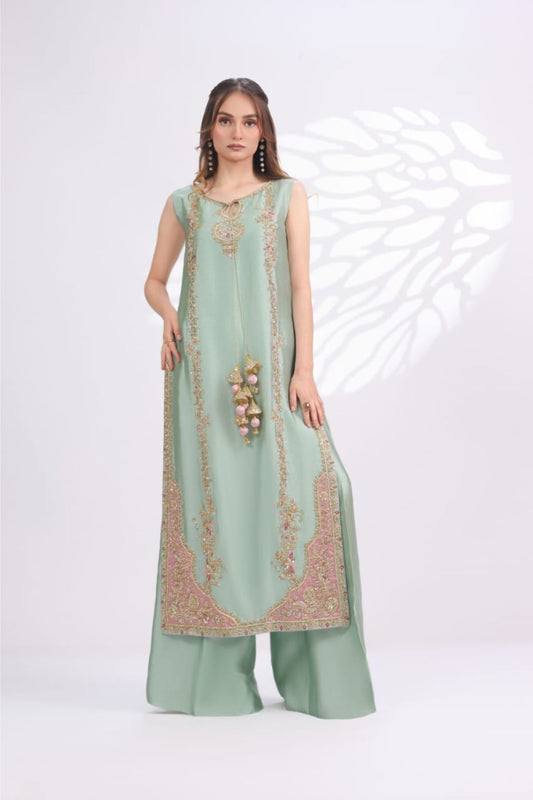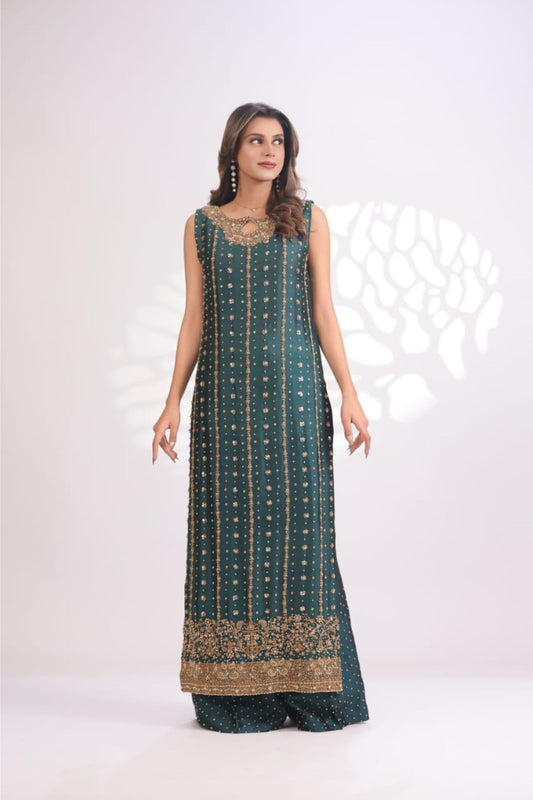Intricate Embroidery: A Staple for Formal Fashion
Embroidery, with its rich history and artistic flair, has long been synonymous with high fashion, particularly in the realm of formal attire. From regal court gowns to modern haute couture collections, intricate embroidery remains a cornerstone of luxury fashion. Whether executed by hand or machine, embroidery adds texture, dimension, and personality to garments, making it an enduring choice for designers and a timeless element in formal fashion. In this article, we will explore why intricate embroidery has stood the test of time as a staple in formal fashion, the techniques behind it, and how it continues to captivate the fashion world today.
The History and Evolution of Embroidery in Fashion
Embroidery can trace its origins back thousands of years, with evidence of its use in ancient Egypt, China, and Greece. In these early civilizations, embroidery was a sign of wealth and social status, often used on royal garments, ceremonial robes, party wear and religious attire. The designs were often symbolic, with intricate patterns and motifs that told stories of divine protection, prosperity, or power.
As centuries passed, embroidery techniques evolved, and the practice became more refined, particularly in Europe during the Renaissance. The introduction of new materials like silk and gold thread allowed for more complex and elaborate designs. Embroidery became a key feature of formalwear for aristocracy and royalty. Gowns, jackets, and capes were embellished with floral patterns, animal motifs, and even mythological scenes, making them not only garments but wearable works of art.
During the Victorian era, embroidery experienced a resurgence, especially in bridal dresses fashion. Intricate lace and floral embroideries adorned wedding dresses, making them more than just a symbol of marriage—these garments were emblematic of the bride's status, wealth, and taste.
The Appeal of Intricate Embroidery in Formal Fashion
There are several reasons why embroidery remains a staple in formal fashion, transcending time periods and trends.
1. Elegance and Sophistication:
Intricate embroidery elevates a garment from simple to extraordinary. Its ability to create texture and depth on fabrics adds a layer of sophistication that is hard to replicate with other design techniques. Whether it's the delicate vines of a floral motif on a gown or the bold geometric patterns on a suit jacket, embroidery brings an air of luxury and refinement. These decorative elements make garments not just functional but also visually captivating, ensuring that the wearer stands out on any formal occasion.
2. Personalization and Customization:
Embroidery offers designers the flexibility to create unique, one-of-a-kind pieces. The customization options are nearly endless—colors, stitches, patterns, and placements can all be tailored to fit the client’s preferences. In the world of high fashion, where exclusivity is key, intricate embroidery allows designers to create personalized formal dresses that speaks to the individual’s taste and personality. Brides, for example, often incorporate meaningful symbols or initials into their wedding dresses through embroidery, making the garment even more significant.
3. Cultural Significance:
Embroidery serves as a vessel for cultural expression in formal fashion. Many cultures have specific embroidery techniques and motifs that reflect their traditions and beliefs. For instance, in Pakistan, intricate threadwork like zari and zardosi is used to create opulent bridal outfits, while in Eastern Europe, floral patterns and geometric designs often carry symbolic meaning. In modern formal fashion, designers continue to incorporate these diverse embroidery traditions, celebrating the richness and diversity of global cultures. This cultural appreciation not only makes the garment visually striking but also imbues it with a deeper significance.
Techniques and Styles of Embroidery in Formal Fashion
The art of embroidery is diverse, with various techniques and styles employed to create intricate designs. These techniques allow for different textures, dimensions, and effects, making them ideal for formal attire.
1. Hand Embroidery:
Hand embroidery is the traditional and most intricate form of the craft. It requires skilled artisans who painstakingly stitch every detail by hand, often over the course of several days or weeks. The slow and meticulous process allows for greater attention to detail, ensuring that each piece is a work of art. This is often the choice for high-fashion couture pieces where uniqueness and precision are paramount.
Common hand-embroidery techniques include satin stitch, French knots, bullion knots, and seed stitching, which can be combined to create intricate, multi-dimensional designs. Hand-embroidered garments can be seen in the collections of luxury fashion houses, where the artistry behind each stitch enhances the elegance of the final garment.
2. Machine Embroidery:
While hand embroidery has a rich heritage, modern fashion has seen the rise of machine embroidery, which allows for quicker production of intricate designs. Advances in technology have made it possible for machines to replicate the delicate and detailed work once done by hand, opening the door for more widespread use in formal fashion. High-end fashion houses often use machine embroidery for its precision and ability to create complex designs in less time.
Though machine embroidery may lack the tactile personal touch of handwork, it still creates stunning effects on fabrics. Digital embroidery has also allowed for the incorporation of additional embellishments like beads, sequins, and pearls, further enhancing the luxury appeal of embroidered garments.
3. Beaded and Metallic Embroidery:
Beaded and metallic embroidery is particularly popular in evening wear and other formal fashion. The use of beads, sequins, and metallic threads adds sparkle and sheen to garments, making them ideal for special occasions. Whether it’s a beaded floral design or an intricate pattern of gold thread, this form of embroidery gives the garment a luminous quality that catches the light and draws attention.
Intricate Embroidery in Modern Formal Fashion
Today, intricate embroidery remains a defining feature in both bridal and evening wear. Modern designers continue to innovate with new materials, techniques, and designs, incorporating embroidery into everything from red-carpet gowns to haute couture dresses. Embroidery can be seen on gowns worn by celebrities at major award ceremonies, where the luxury of intricate needlework adds to the glamour of the event.
In addition to traditional formal wear, embroidery has also found its way into more contemporary styles. From embroidered blazers to dresses and suits with fine stitching details, this versatile technique adds an element of sophistication to modern formal fashion. It is no longer limited to evening gowns; embroidered blouses, skirts, and trousers have become popular in formal office wear as well.






